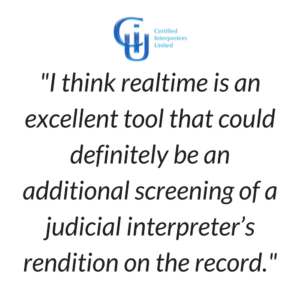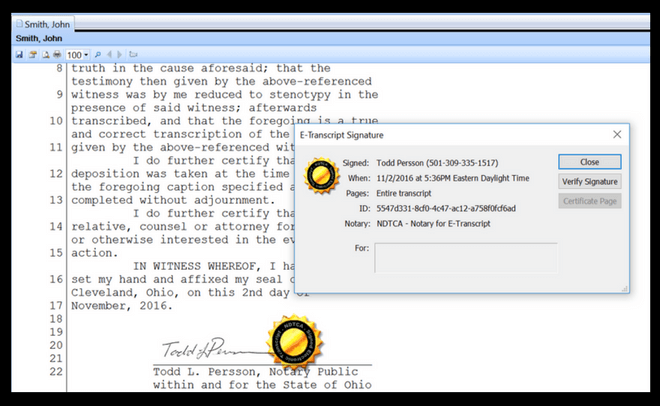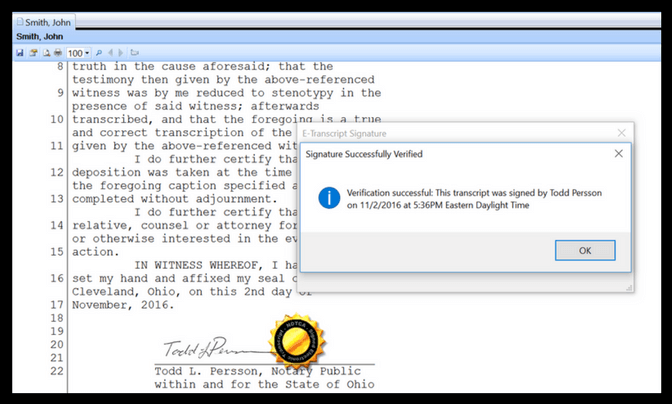Video Depositions: Linguistics, Seinfeld, and Juror Engagement
07 Nov 2017, Posted by in Attorneys, Court Reporting, Legal Technology, Legal Video, Litigation Support, ParalegalsThere is a tremendous difference between spoken and written language. Humans had been communicating with each other for thousands of years before someone, somewhere (most likely Mesopotamia) decided to create the first logographic form of communication. From this very beginning of ancient “writing,” the shortcomings of written communication when it comes to capturing linguistic and phonological content emerged.
Having studied philosophy and English in college before attending court reporting school, I can tell you that every written language since, including modernity, has encountered the same difficulty in translating and conveying all meaning from speech to text; and because humans have a much longer history of communicating with sounds, gestures, expression and body language than communicating with writing, we are simply better at it. Sure, written English expression has gotten better over millennia with the implementation of stylistic tactics, such as the use of italics to indicate inflection, punctuation to express emotion, and even more recently using hundreds of emoticons in the expression of more complex emotions such as fear and grief, but writing alone still falls incredibly short in the conveyance of all meaning when compared to spoken language.
We can see some of these linguistic difficulties emerge in the legal world when it comes to trial presentation and juror engagement. Communicating effectively to a jury in a civil trial is tricky business. Having reported many jury voir dire over my career as a court reporter, from what I have seen and overheard while not on the record is that a good majority of potential jurors do not even want to be there and are just waiting to be excused. Furthermore, to the average person, the subject matter of most civil litigation is probably pretty dry when compared to the drama of criminal trials (no offense to civil trial attorneys who may be reading this). So the big question: How do you, as a civil litigator, hold the attention of and actually get through to a jury when it comes to presenting discovery testimony at trial?
DO WORDS ALONE FULLY ENGAGE OR HAVE AN IMPACT ON A JURY?
I am not a litigator. However, as a court reporter with 15 years of experience, I could certainly be considered a professional observer. Not only am I capturing every word being spoken and who is speaking those words, but my experience in depositions and trials has trained me to recognize body language, inflection, context, diction, emotion, sarcasm, and other linguistic cues that resolve ambiguity and result in effective pragmatic communication beyond just the words themselves. But here’s the catch: While I can easily recognize all these stylistic nuances of spoken English that can have a great impact on meaning, none of them are reflected in the written transcripts that I produce, nor am I ethically permitted to indicate any linguistics in a transcript beyond the words themselves. And when it comes to trial presentation and juror engagement, these auditory, visual and physical aspects of human conversation that don’t show up in transcripts can oftentimes speak louder than words and drastically affect the meaning of any given passage of discovery testimony that is presented to a jury.
A TRIAL IS LIKE AN ACCELERATED MARKETING CAMPAIGN
Being the “professional observer” that I am, it also didn’t take me long to realize that a trial in the American justice system is akin to a marketing campaign. The idealist in me would like to believe it is only the facts and truths that will determine the outcome of a criminal or civil jury trial, but in reality it is the presentation of all that evidence that will carry the most weight. Just as the tools professional marketers use to reach and persuade their target audiences have changed over decades with advancing technology and the way in which humans interact with their environments, the tools used by litigators to effectively present a case to a jury have evolved significantly.
As an attorney, your case is the product you are selling. Jury voir dire is the act of selecting the best possible target audience for your product. Because the parties in any jury trial have all the same evidence at their disposal, the products that both sides are trying to sell to the same audience are made up of the same fundamental components, just put together and presented in different manners. Thus, it is crucial to use the most effective tools possible in your trial presentation that will create the necessary juror engagement, understanding and empathy that will ultimately lead to the sale of your product to that jury.
TRANSCRIPTS ARE NOT EFFECTIVE TRIAL PRESENTATION TOOLS
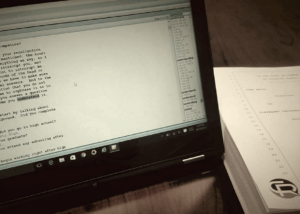 Now, the transcripts you receive from your court reporter are one of the best and most vital tools for trial preparation, but as I have seen firsthand in jury trials I have reported, they are not very effective tools for modern-day trial presentation (unless your goal is to quickly disengage your jury and/or put them to sleep). Transcripts produced by reputable court reporters will allow you to easily and quickly search through thousands of pages of testimony, annotate within the body of the transcripts to come back to later or share with co-counsel, and have all the deposition exhibits embedded in those files with hyperlinks for instant review. However, transcripts only capture words; without inflection, without emotion, and with little or no context.
Now, the transcripts you receive from your court reporter are one of the best and most vital tools for trial preparation, but as I have seen firsthand in jury trials I have reported, they are not very effective tools for modern-day trial presentation (unless your goal is to quickly disengage your jury and/or put them to sleep). Transcripts produced by reputable court reporters will allow you to easily and quickly search through thousands of pages of testimony, annotate within the body of the transcripts to come back to later or share with co-counsel, and have all the deposition exhibits embedded in those files with hyperlinks for instant review. However, transcripts only capture words; without inflection, without emotion, and with little or no context.
So when you, as a litigator, need to present deposition testimony to a jury because you have a witness who will be unavailable at the time of trial, or you need to impeach a witness who is live on the stand in court with his or her previous deposition testimony, how do you best present that testimony to a jury and keep them engaged without compromising any of the linguistics and meaning that simply don’t come across in written transcripts alone?
THE USE OF VIDEO DEPOSITIONS TO CAPTURE THE LINGUISTICS THAT GET LOST IN A TRANSCRIPT
As stated above, all the aspects of linguistics involved in human communication include a wide variety of complexities that go far beyond just the actual words in a transcript. Thus, transcripts of testimony are best left to attorneys and triers of fact in any given case for review, and deposition testimony presented to a jury will be most effective with the use of video testimony captured by certified legal video specialists. While the loss of inflection, emotion, diction and other linguistics involved in testimony with the use of transcripts may not matter to those presenting or reviewing a case, it could make all the difference to a jury.
In this article, I will discuss some principles of linguistics using a few examples from pop culture and how those examples then apply to real-life situations in courtrooms across America. I will then discuss how to avoid the pitfalls in loss of meaning and context of deposition testimony by adding video to your discovery depositions for eventual use in your trial presentation. Finally, I will discuss how court reporters, legal videographers, and trial technicians work fluidly together to produce the most effective tools available when you need to incorporate discovery testimony into your trial presentation.
SEINFELD – A LESSON IN THE IMPORTANCE OF INFLECTION
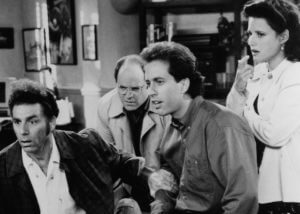 Seinfeld is widely considered to be one of the most successful and original sitcoms of all time, and the running gag over its nine seasons is that it was a show about nothing. However, what I think the show was really about is all the everyday social peculiarities we come across in American life, especially when it comes to the subtleties and nuances in language and conversation that can greatly affect meaning and lead to hilarious or unfortunate situations and misunderstandings.
Seinfeld is widely considered to be one of the most successful and original sitcoms of all time, and the running gag over its nine seasons is that it was a show about nothing. However, what I think the show was really about is all the everyday social peculiarities we come across in American life, especially when it comes to the subtleties and nuances in language and conversation that can greatly affect meaning and lead to hilarious or unfortunate situations and misunderstandings.
One of the linguistic oddities we come across in daily conversation is the effortless use of inflection when we speak, changing the meaning of each sentence we utter depending on which word in each sentence we choose to inflect. Inflection is completely lost in a written transcript, and the loss of that inflection can change the meaning of testimony in many ways. A classic example of inflection changing the meaning of even a very small sentence can be found in Seinfeld, Season 6, Episode 8, “The Mom and Pop Store.”
In this episode, title character Jerry is unsure if he was purposefully not invited to a party at dentist Tim Whatley’s apartment overlooking the Macy’s Thanksgiving Day Parade, or if his invitation simply got lost in the mail. Jerry asks friend Elaine to find out if he was invited by asking Tim whether he wants Jerry to bring anything to the party.
When Elaine reports back to Jerry the next day, she says that Tim’s response was, “Why would Jerry bring anything?”
Jerry then comes back with a great question in linguistics. He says to Elaine, “But let me ask you this: Did he say, ‘Why would Jerry bring anything?’ or ‘Why would Jerry bring anything?’ Did he emphasize Jerry or bring?”
Elaine’s response is, “I think he emphasized would.”
Although taken from an absurdist sitcom, this is a great lesson in how three different inflections can change meaning three different ways in even a five-word sentence: “Why would Jerry bring anything?” If Jerry was inflected, it would mean that he was probably not invited. If bring was inflected, it most likely means that Jerry was invited, but Tim is not expecting him to bring anything to the party. If would was inflected, it becomes a little more unclear or ambiguous as to whether Jerry was actually invited. And therein lies the punchline when Elaine says that would was the word Tim emphasized. Jerry is still uncertain if he’s invited to the party based solely on Tim’s choice of inflection. Spoiler Alert: Jerry crashes the party, inadvertently destroys a four-story Woody Woodpecker parade balloon, and is publicly accused of being a troublemaker by Tim Whatley.
 As you can see from this lesson in linguistics from Seinfeld, humans are very efficient speakers, and we oftentimes use inflection in our speech in lieu of more words to get our full meaning across, leaving it to our listeners to infer more meaning based on the words we choose to inflect.
As you can see from this lesson in linguistics from Seinfeld, humans are very efficient speakers, and we oftentimes use inflection in our speech in lieu of more words to get our full meaning across, leaving it to our listeners to infer more meaning based on the words we choose to inflect.
INFLECTION IN TESTIMONY
The fact that we as humans are naturally efficient speakers, using inflection in addition to words to express ourselves and relying on the inferences of our audience to convey our complete meaning does not bode well in the world of litigation if written transcripts are the only form of presenting discovery testimony to a jury at trial. The downside to being efficient speakers is that we are also very ambiguous communicators, and ambiguity is a nightmare in litigation. In fact, some of the most clever and astute speakers will use less words and will rely more heavily on auditory and physical linguistics to convey meaning, demanding more inference on the part of their listeners to get their entire meaning across.
Now imagine how many inflections are used by a witness in the thousands of sentences uttered in a deposition that can resolve ambiguity or completely change the meaning of answers when you go back and read a court reporter’s transcript. The words are all there, but is all intended meaning preserved?
AVOID LOSS OF INTENDED MEANING FROM INFLECTION BY ADDING VIDEO TO DEPOSITIONS
By including legal videography in addition to a court reporter to capture testimony in a deposition, you are investing in your future trial presentation and will be certain that no meaning caused by inflection is lost when presenting that testimony to a jury at trial. However, if your trial presentation strategy is solely reading to a jury from a previous deposition transcript, in whole or in part, you run the risk of the following when it comes to inflection:
- Ask any court reporter, and they will tell you; when humans read aloud, we tend to read very quickly and in monotone. No inflection will be conveyed in any passage of testimony where inflection may have been present, which could have a drastic effect on the way in which the jury receives that testimony.
- When reading discovery testimony to a jury, you run the risk of inadvertently inserting inflection that was not the intended inflection of the witness, which can, again, drastically affect the way in which that testimony is received by the jury.
- By not capturing discovery testimony with video, inflection is essentially fair game when reading transcripts to a jury. Perhaps opposing counsel will read a passage of your key expert’s deposition testimony at trial, but will insert inflection where he or she pleases to change meaning in favor of their case.
- When reading discovery testimony to a jury with no natural inflection, you run the risk of putting your jury to sleep.
Inflection is a natural and significant part of human communication in the conveyance of meaning and, therefore, should be captured and preserved for future presentation of testimony to a jury.
MY COUSIN VINNY – A LESSON IN THE IMPORTANCE OF EMOTION, BODY LANGUAGE, AND CONTEXT
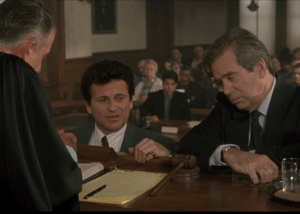 In the 1992 courtroom comedy My Cousin Vinny, two young men find themselves accused of first degree murder in the deep South in a classic case of mistaken identity and happenstance. Their only hope for escaping a death sentence is a rough-around-the-edges little tough guy and attorney from Brooklyn, Vinny Gambini, who is the cousin of Billy Gambini, one of the accused.
In the 1992 courtroom comedy My Cousin Vinny, two young men find themselves accused of first degree murder in the deep South in a classic case of mistaken identity and happenstance. Their only hope for escaping a death sentence is a rough-around-the-edges little tough guy and attorney from Brooklyn, Vinny Gambini, who is the cousin of Billy Gambini, one of the accused.
Upon his arrest, Billy is under the impression he and his friend were arrested for accidentally stealing a can of tuna from the Sac-of-Suds convenience store in rural Alabama, but during his interrogation with Sheriff Farley, the gravity of the situation comes to light.
Billy is completely apologetic to Sherriff Farley in his interrogation, and he explains the situation of accidentally placing the can of tuna in his jacket pocket before leaving the Sac-of-Suds without paying for it. The Sheriff listens intently, then calmly asks, “At what point did you shoot the clerk?” With a sincere look of shock on his face and shoulders shrugged, Billy replies, “I shot the clerk. I shot the clerk?” Sherriff Farley says again, “Yes, at what point did you shoot the clerk?” Again, befuddled Billy says with even more disbelief and emotion, “I shot the clerk?”
It is at this point that Billy realizes they were not arrested for stealing a can of tuna, but rather for murdering the Sac-of-Suds clerk. It is obvious to the audience that Billy is taken aback by this during the interrogation and clearly had no idea the clerk had even been shot, just by seeing his facial and body language and with the emotion in which he says, “I shot the clerk?”
Now, here is where it gets interesting and to the point of loss of linguistic meaning with written transcripts. While on the stand on direct examination during the murder trial of Billy and his friend, Prosecutor Jim Trotter asks Sheriff Farley if he had gotten a confession from Billy the day of their arrest. Sherriff Farley replies that he did, and then after putting on his reading glasses reads from what appears to be a transcript of the interrogation.
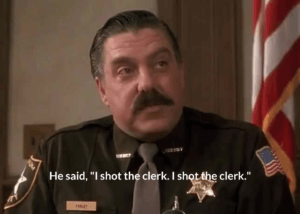 He testifies to the jury with a straight face and no emotion: “I asked him at what point did he shoot the clerk. He said, ‘I shot the clerk. I shot the clerk.’” The jury gasps, and it appears that the boys are doomed. Spoiler alert: After a ridiculous trial, some hilarious word pronunciation by Joe Pesci, a ruthless judge, and theatrical courtroom wardrobes and antics, the case is eventually dismissed by the prosecution due to the testimony of Vinny’s girlfriend, who conveniently knows way too much about positraction, slip differential, and the colors offered by GM on all their mid ‘60s makes and models. It’s a true case of mistaken identity and coincidence, and the boys are set free.
He testifies to the jury with a straight face and no emotion: “I asked him at what point did he shoot the clerk. He said, ‘I shot the clerk. I shot the clerk.’” The jury gasps, and it appears that the boys are doomed. Spoiler alert: After a ridiculous trial, some hilarious word pronunciation by Joe Pesci, a ruthless judge, and theatrical courtroom wardrobes and antics, the case is eventually dismissed by the prosecution due to the testimony of Vinny’s girlfriend, who conveniently knows way too much about positraction, slip differential, and the colors offered by GM on all their mid ‘60s makes and models. It’s a true case of mistaken identity and coincidence, and the boys are set free.
EMOTION IN TESTIMONY
When humans speak, we alter the meaning of what we are saying by showing emotion, facial expression, and body language that give more context to our intentions. As we can see from the My Cousin Vinny example above, when emotion and body language is removed from a response (in this case during interrogation), meaning can be completely lost or altered. Had the jury in the movie been shown a video of the interrogation, they would have easily seen and believed Billy’s complete shock to the accusation that he had shot the Sac-of-Suds clerk. However, when the jury was simply read to from a passage of his interrogation transcript with no emotion or context, it reads like a confession and becomes extremely damning evidence.
YES, NO, I DON’T KNOW, I DON’T RECALL
During deposition testimony, linguistics such as inflection and the meaning of the actual words themselves will resolve most instances of ambiguity eventually in longer, descriptive responses. However, it is in the hundreds of short responses where emotion, facial and body language, tone and context will alter meaning the most.
Short responses like “yes,” “no,” “I don’t know,” “I don’t recall,” and “I can’t remember” will pepper a deposition transcript of any length, and if you are gauging by words alone, every instance of these responses will look the same and have the exact same meaning as any other instance. But when you add the linguistic layers of emotion, facial and body language, tone and context on top of these very frequently used phrases, meaning can be altered on many levels.
Some examples are:
- The witness is screaming “yes” or “no.”
- The witness has a wry smile on his or her face while answering “yes” or “no.”
- The witness answers “yes” or “no,” but softly, with their head down, avoiding eye contact.
- The witness looks to his or her attorney before answering “yes” or “no.”
- The witness takes a very long pause to a seemingly simple question before answering “yes” or “no.”
- The witness cuts off counsel’s question before answering “yes” or “no” with contemptuous tone and/or expression.
- The witness cuts off counsel’s question before answering “I don’t know” or “I can’t recall.” Could they have possibly taken the time to search their memory without even hearing the entire question?
- The witness answers “I don’t recall” one after another to a quick series of counsel’s questions with obviously no thought involved.
- The witness answers “I don’t recall” or “I can’t remember” while sighing and rolling his or her eyes.
I could go on with examples where emotional linguistics really hijack meaning in short responses, but I think you probably get the point.
AVOID LOSS OF INTENDED MEANING FROM EMOTION BY ADDING VIDEO TO DEPOSITIONS
Now, during live testimony on the stand at trial, a jury will witness all the emotion, facial expression, body language, and elapsed time that may accompany responses, and will take those into account along with the actual words in determining the weight they will give to the evidence or in determining the credibility of the witness. But when previous deposition testimony is simply read to a jury, all emotional linguistics is lost.
By adding video to your discovery or trial depositions, you will be sure that all intended meaning from emotion and body language, facial expression and tone will be preserved for the jury, and the witness’s true and complete meaning and character will be conveyed.
Now that we have seen some aspects of linguistics that support the consideration of adding video to your discovery depositions, let’s look at some social aspects that will make it clear that adding video in addition to a court reporter in capturing and preserving testimony is probably a good idea.
IT’S CALLED YOUTUBE, NOT YOUTEXT
 If you think back to the infancy of the Internet, you may remember it wasn’t a very engaging place to spend your time, and the process probably left you entirely more frustrated and exhausted than anything resembling satisfaction. It was mostly text, and if there were images of any kind, they appeared on your screen very slowly, from top to bottom, with laughable clarity. The young Internet was mostly a place for research, and was more frequently associated with term papers and boredom than recreation and fun.
If you think back to the infancy of the Internet, you may remember it wasn’t a very engaging place to spend your time, and the process probably left you entirely more frustrated and exhausted than anything resembling satisfaction. It was mostly text, and if there were images of any kind, they appeared on your screen very slowly, from top to bottom, with laughable clarity. The young Internet was mostly a place for research, and was more frequently associated with term papers and boredom than recreation and fun.
Fast-forward a couple decades, incredible advancements in media players, processors, and the way we effortlessly connect, the modern recreational Internet we recognize today took shape. It’s fascinating to think how something so “new” could have the enormous impact it has had in almost every aspect of our lives. Frankly, to think the Internet’s influence over us today doesn’t cross over into the world of litigation and juror engagement is a monumental underestimation of its power and grasp, its ability to forever alter how we interact with our environments.
THE POWER OF VIDEO
YouTube is now one of the most profitable arms of Google and one of the most popular and influential websites that exist today. Now, imagine that advancements in media players and processors never happened, and the Internet was still mostly text. Would there be a billion-dollar site called YouText, where you would upload descriptions of events you witnessed? Would there be 150 million hits on your uploaded written description of some unfortunate cat wearing a cape jumping on a trampoline? Of course not.
YouTube is the giant it is because of the simple concept that humans react to and interact with that which most resembles reality. We are visual creatures. We are auditory creatures. Generally speaking, we are creatures that would rather be shown than rely on any part of our imagination. This is not because we are lazy or unimaginative. It’s in our DNA. It’s in our history. At the beginning of this article, I pointed out that written communication is relatively new to us. If there is a way to explain and show us something by enticing and inspiring our innate ancestral visual and auditory facilities rather than forcing us to use our imaginations to mimic reality, it will hold our attention and have an immediate impact on us.
THE YOUTUBE EFFECT
Today’s jurors live in the same world we all do, and they have been influenced by technology in their daily lives just like the rest of us. They have expectations of immediate gratification and simplification the likes we have never seen. Just like the average person, they expect to be influenced and entertained by mimicked reality. This is The YouTube Effect, and it is not going anywhere. Its effects will probably increase. The mantra is simple: Show me, or I’m not interested.
The YouTube Effect is on display every day in courtrooms across America. It’s as simple as this: show the jury testimony with video clips, they are engaged. Read to them passages of testimony, they are disengaged. It’s almost like the old saying “I’ll believe it when I see it.” The origins of this idiom are unclear. Some believe it dates back to the Chinese philosopher Xunzi, who was a Confucian, with the quote “I hear and I forget. I see and I remember.” However, other origins also point to the 1960s American “learning through experience” educational movement.
Regardless of its origins, it is clear The YouTube Effect is an extension of this philosophy, and its presence in American courtrooms is real. Read to a jury, they will forget. Show the jury, they will remember.
INSTANT GRATIFICATION AND IMPEACHMENT
We live in a society of the now and crave and expect information immediately. This totality of immediacy has gotten so prevalent in our culture that events and stories are shared across social media seemingly before they even happen in real life. Twitter journalism has shown us that generally we are more concerned with learning of a news story as soon as possible (regardless of the accuracy of the content) than with waiting for a complete, fact-checked story that may take longer to reach us.
Remember, potential jurors live in the same immediate information-crazed society we all do, and they will expect the same from your trial presentation. When impeaching a witness on the stand with his or her previous deposition testimony, don’t make your jury wait. Give it to them immediately. By using video in addition to a court reporter in your discovery depositions, and then by working with experienced and talented trial technicians during your trial presentation, the impact of inconsistent testimony on your jury can be immediate and incredibly powerful.
Your trial technician will use the tools provided to them by a court reporter and videographer to prepare short video clips of deposition testimony that can then be pulled up and played for your jury immediately should the witness’s testimony conflict with his or her testimony in discovery. You may have an idea where their testimony might differ at trial based on errata sheets or simply hunches, and you can prepare for your trial examination closely with your trial technician so that all clips of previous testimony are ready to go should you need them. Without this superior preparedness, you may be left fumbling around with transcripts trying to locate a witness’s previous testimony to make your case for impeachment. But guess what: the longer it takes to present previous testimony to your jury to impeach a witness, the less impact it will have. If you instead are immediately pulling up clips of testimony from deposition captured by video that contradict what the jury just heard from the witness on the stand, it will resonate with your jury immediately, and you can be sure that your argument will be heard and received with little doubt.
THE ONE-TWO-THREE LITIGATION SUPPORT PUNCH
Now that we have explored the complex linguistic and social reasoning for incorporating video into discovery for use in your eventual trial down the road, let’s take a look at how the Big Three arms of litigation support work fluidly together to ensure your trial presentation is the most impactful and effective as it can be.
LITIGATION SUPPORT ARM NUMBER 1 – COURT REPORTERS
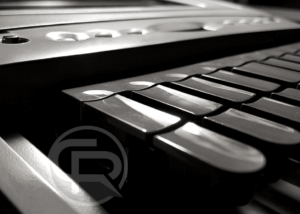 Your court reporter will provide you with the necessary foundation to create the most effective tools for your trial presentation. That necessary foundation is the actual written transcript. Your court reporter will capture spoken testimony and preserve linguistic word meaning in your discovery depositions and will create a highly functional, click-searchable transcript. Now, to learn how court reporters actually do this, I’d invite you to check out my previous article that explains all the sophisticated equipment, software, and training involved in court reporting technology. But for the purposes of this article, just know that the written transcript is the necessary first step in the creation of state-of-the-art trial presentation tools.
Your court reporter will provide you with the necessary foundation to create the most effective tools for your trial presentation. That necessary foundation is the actual written transcript. Your court reporter will capture spoken testimony and preserve linguistic word meaning in your discovery depositions and will create a highly functional, click-searchable transcript. Now, to learn how court reporters actually do this, I’d invite you to check out my previous article that explains all the sophisticated equipment, software, and training involved in court reporting technology. But for the purposes of this article, just know that the written transcript is the necessary first step in the creation of state-of-the-art trial presentation tools.
LITIGATION SUPPORT ARM NUMBER 2 – LEGAL VIDEOGRAPHERS
 Just as with court reporters, you will be working with videographers during the discovery phase of your cases. While court reporters are capturing all the words of testimony, videographers will be capturing all the other linguistic components of testimony discussed earlier that may be just as important as the words themselves when it comes to juror engagement and how that testimony will be received by a jury. The Certified Legal Video Specialist (CLVS) certification is granted by the National Court Reporters Association after a videographer passes a CLVS exam that will indicate the videographer’s mastery of their craft and a complete understanding of all the Rules of Civil Procedure and ethics that apply to video depositions.
Just as with court reporters, you will be working with videographers during the discovery phase of your cases. While court reporters are capturing all the words of testimony, videographers will be capturing all the other linguistic components of testimony discussed earlier that may be just as important as the words themselves when it comes to juror engagement and how that testimony will be received by a jury. The Certified Legal Video Specialist (CLVS) certification is granted by the National Court Reporters Association after a videographer passes a CLVS exam that will indicate the videographer’s mastery of their craft and a complete understanding of all the Rules of Civil Procedure and ethics that apply to video depositions.
After a video deposition is complete, the videographer will obtain a .txt transcript file from the court reporter and will sync the transcript to their video files. Why is this so important? By syncing the click-searchable transcript to the video files, you are now able to quickly and effortlessly search through the synced file to eventually create short video clips of testimony that you will then use in your trial presentation. Without syncing the transcript to the video files, the process of finding the segments you want to use at trial would take an eternity, especially in cases where you have hundreds of hours of video to go through. It is for this reason why I consider the transcript the foundation. Without it, the process of editing video clips becomes incredibly tedious and can seem like an insurmountable task. With the transcript synced, however, the process of creating video clips is effortless and efficient.
LITIGATION SUPPORT ARM NUMBER 3 – TRIAL TECHNICIANS
Your trial technician will be working with you from the end of discovery to verdict, and will be with you in court during your trial presentation. By obtaining all the synced video files from the court reporter and videographer, he or she will then create the video clips to possibly play for the jury at your direction. They will be with you during preparation of examination outlines, and you will work together to ensure you create all the clips of previous testimony that you will need to show the jury in the event your witness on the stand contradicts their previous testimony. With diligent preparation and by working with talented trial technicians, this will happen seamlessly, and the jury will be shown contradictory testimony almost immediately after the witness on the stand has completed their answer to counsel’s question. This is by far the most powerful tool available for witness impeachment, and the jury will be impressed with your preparedness and immediacy.
By working with all of the Big Three arms of litigation support, you can take at least some control over the unpredictable nature of litigation and juror engagement and have some peace of mind in knowing that of all the things that can go wrong at trial, effectively getting through to your jury will not be one of them.
RECOGNIZING THE EVOLVING NATURE OF A JURY
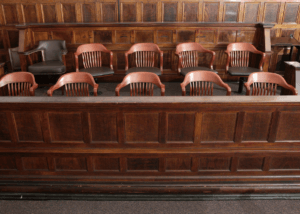 A trial in America is cluttered with so many variables beyond a litigator’s control, it is no wonder the vast majority of cases filed never see the inside of a courtroom. Trials are huge gambles, for sure. You may have complete confidence that your argument is airtight, all your evidence is solid in foundation and without spoliation, all your witnesses are properly prepped, and your cross-examination strategy is foolproof. But you are your own worst critic. It doesn’t matter what you believe. All that matters is how the jury receives your argument, how the jury sees your case. However, by understanding a modern-day jury, you can take control of this one unpredictable aspect of litigation.
A trial in America is cluttered with so many variables beyond a litigator’s control, it is no wonder the vast majority of cases filed never see the inside of a courtroom. Trials are huge gambles, for sure. You may have complete confidence that your argument is airtight, all your evidence is solid in foundation and without spoliation, all your witnesses are properly prepped, and your cross-examination strategy is foolproof. But you are your own worst critic. It doesn’t matter what you believe. All that matters is how the jury receives your argument, how the jury sees your case. However, by understanding a modern-day jury, you can take control of this one unpredictable aspect of litigation.
A jury is a collection of our peers. They live in present-day society and are influenced by the changing dynamics of society year after year. Jurors will react to your trial presentation in the same way they interact with their environments at home and in their daily lives when they realize they are the target of marketing. Being seated on a jury will be like nothing they have ever experienced, and it is so important to transform this new, unfamiliar environment into something familiar. When you incorporate video into your discovery depositions for future use in your trial presentation, you will be using tools jurors are familiar with in daily life when they know they are being subject to influence. By recognizing that your jury is prone to The YouTube Effect and will also recognize and react to complex linguistics beyond actual words, you can take some uncertainty out of the unpredictable nature of juror engagement.
WILL THE JURY RECEIVE THIS EVIDENCE?
Bottom line, a question to ask yourself before trial is: “Will the jury receive this evidence?” However, as we saw from the Seinfeld example earlier, this question can be asked two different ways depending on inflection. “Will the jury receive this evidence?” or “Will the jury receive this evidence?” The manner in which you ask yourself this question can alter your trial strategy and ultimately impact your success in effective communication to your jury.
By asking yourself the question with the inflection on receive, you are going into your trial with the assumption that the way in which you present evidence to a jury is just as important as the content of the evidence itself. And in today’s litigation environment, well, this just may be the case.
Related Articles:
7 Benefits of MP4 Video Deposition Streaming
Court Reporters v. Digital Recording and Voice Recognition: A Comprehensive Breakdown
About the Author:
Todd L. Persson has been serving the Cleveland legal community as a court reporter since 2002 and is a Co-Founder of Cleveland-based litigation support firm Cleveland Reporting Partners, LLC. He has spoken on the future of court reporting and technology on the Stenographers World Radio national podcast, has had blogs featured nationally by the National Court Reporters Association and the American Translators Association, and has contributed content to the Cleveland Metropolitan Bar Journal. To read Todd’s full bio, visit our Partners page. Connect with him on LinkedIn here.
CRP Blog Editors in Chief:
Grace Hilpert-Roach has been serving the Cleveland legal community as a court reporter since 1992 and is a Co-Founder of Cleveland Reporting Partners, LLC. To read Grace’s full bio, visit our Partners Page. Connect with her on LinkedIn here.
Christine Zarife Green has been serving the Cleveland legal community as a court reporter since 2008 and is a Co-Founder of Cleveland Reporting Partners, LLC. To read Christine’s full bio, visit our Partners Page. Connect with her on LinkedIn here.


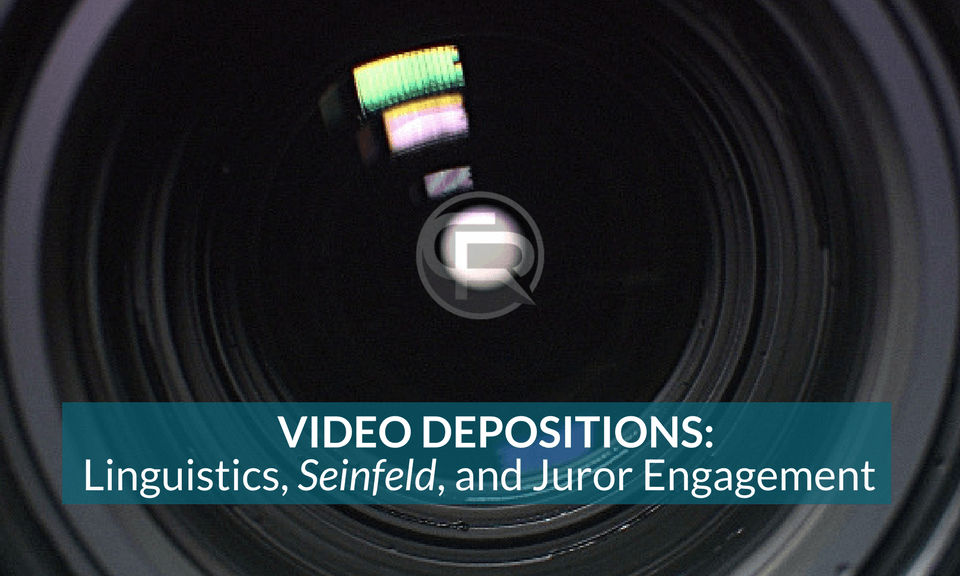
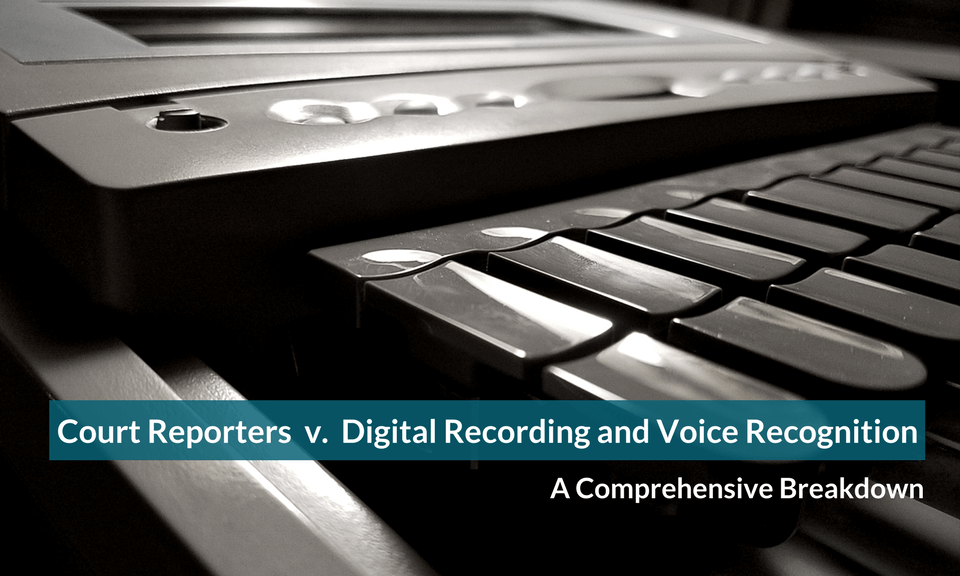
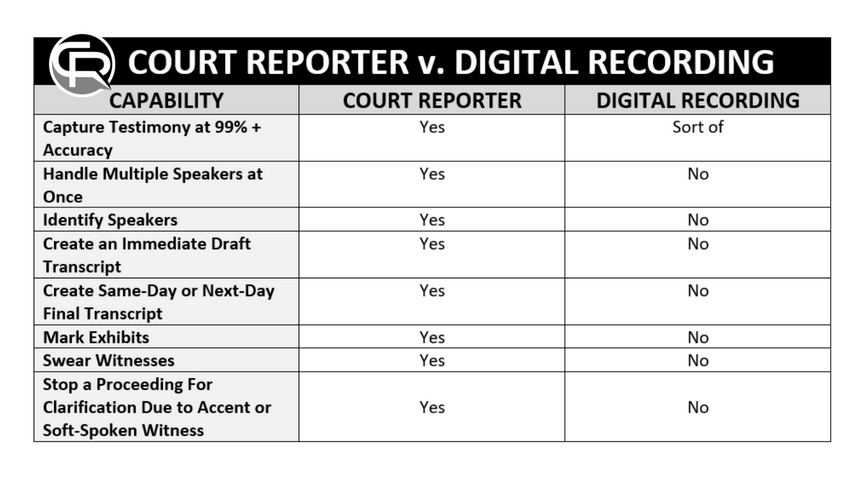
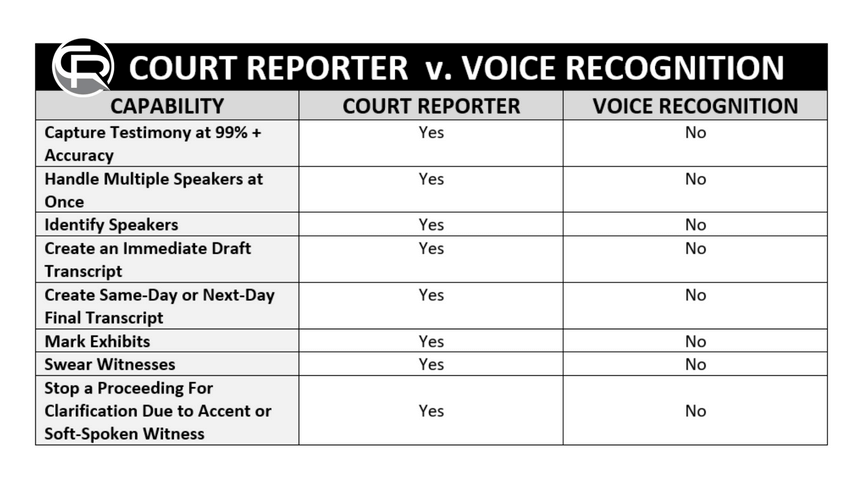



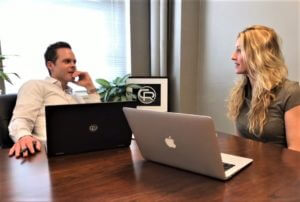

 CHRISTINE GREEN: What is the difference between a Certified Judicial Interpreter and an ad hoc bilingual acting interpreter?
CHRISTINE GREEN: What is the difference between a Certified Judicial Interpreter and an ad hoc bilingual acting interpreter?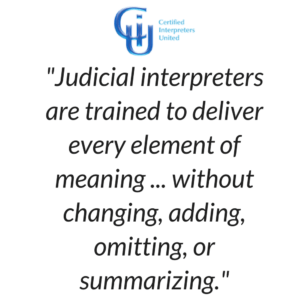
 CG: As court reporters, we have worked with many interpreters in depositions over our many years of experience. We oftentimes see that interpretations of witness testimony are challenged, and either our audio will be requested or subpoenaed by counsel or the deposition will need to be taken again using a different interpreter. As a Certified Judicial Interpreter with all your training, education and testing by the Supreme Courts of Ohio and California, is your interpretation less likely to be challenged in contentious cases?
CG: As court reporters, we have worked with many interpreters in depositions over our many years of experience. We oftentimes see that interpretations of witness testimony are challenged, and either our audio will be requested or subpoenaed by counsel or the deposition will need to be taken again using a different interpreter. As a Certified Judicial Interpreter with all your training, education and testing by the Supreme Courts of Ohio and California, is your interpretation less likely to be challenged in contentious cases?  RK: Well, I’m definitely not a lawyer, but I can tell you what I’ve observed in the past. The attorney, while performing the duties of an interpreter or questioning the rendition on the spot cannot at the same time effectively represent the legal interest of a defendant or plaintiff. A judicial interpreter carries out a linguistic analysis. An attorney listens, takes notes and undertakes a legal analysis, including evaluating opposing counsel’s evidence, formulating new questions, highlighting or diminishing a fact and gathering more information to support or counter an argument.
RK: Well, I’m definitely not a lawyer, but I can tell you what I’ve observed in the past. The attorney, while performing the duties of an interpreter or questioning the rendition on the spot cannot at the same time effectively represent the legal interest of a defendant or plaintiff. A judicial interpreter carries out a linguistic analysis. An attorney listens, takes notes and undertakes a legal analysis, including evaluating opposing counsel’s evidence, formulating new questions, highlighting or diminishing a fact and gathering more information to support or counter an argument.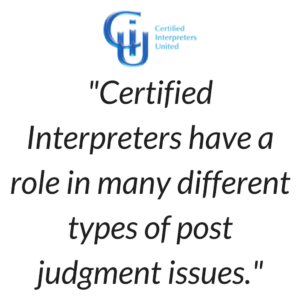 TP: Let me ask you this; how is a day in the life of a judicial interpreter?
TP: Let me ask you this; how is a day in the life of a judicial interpreter?